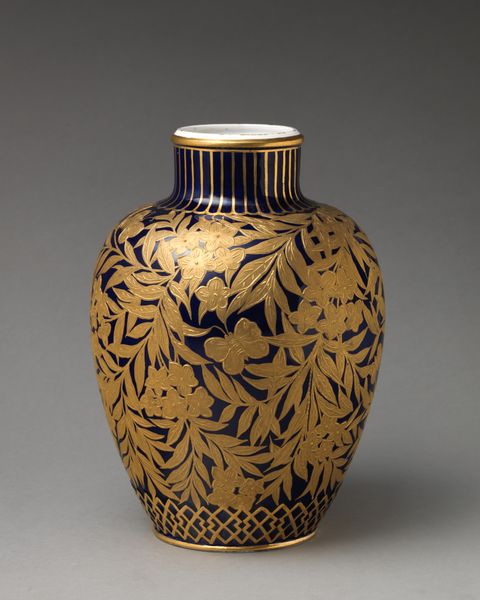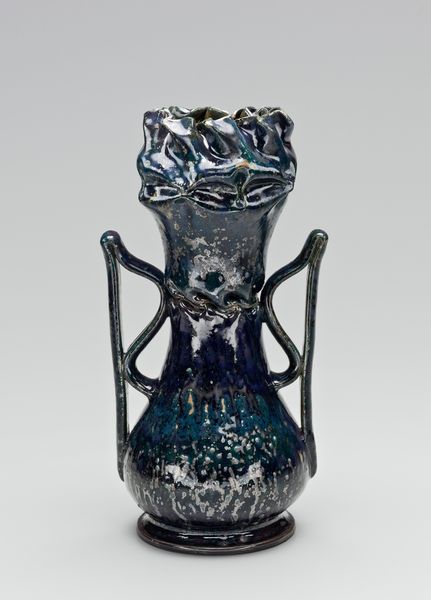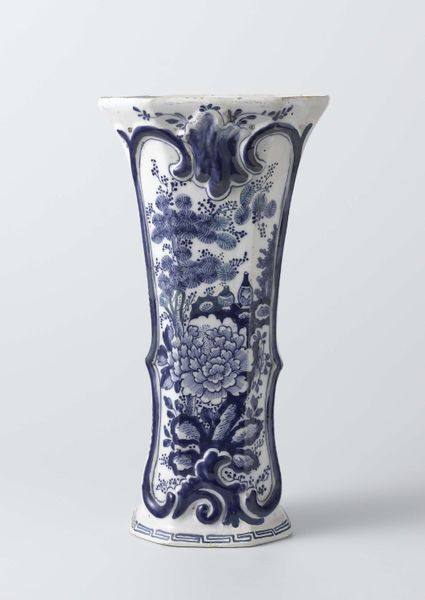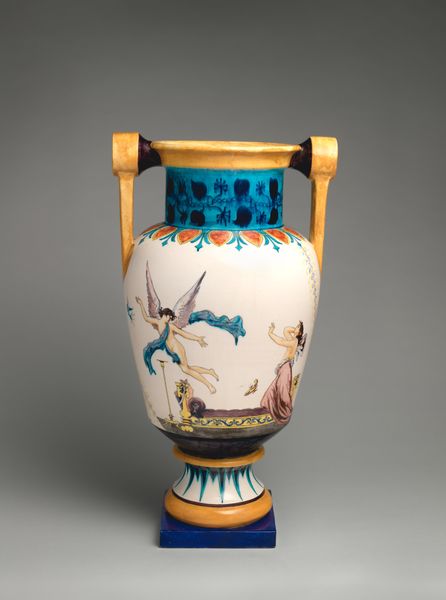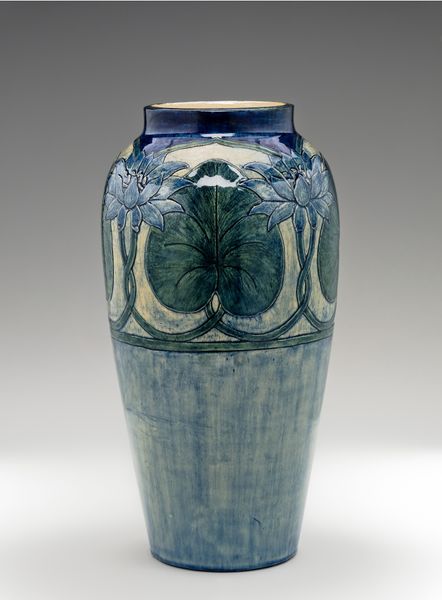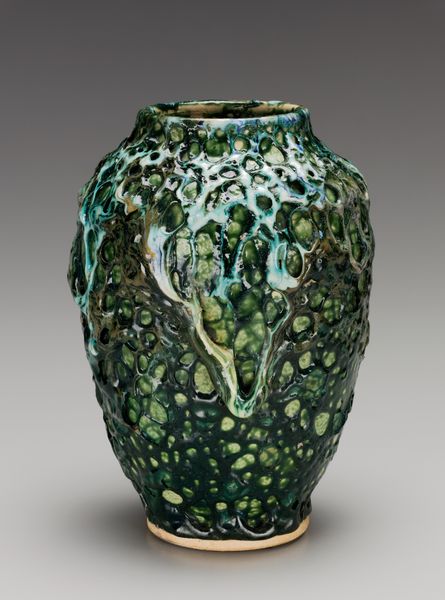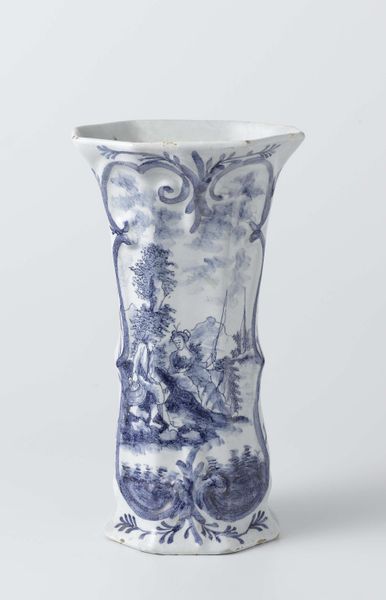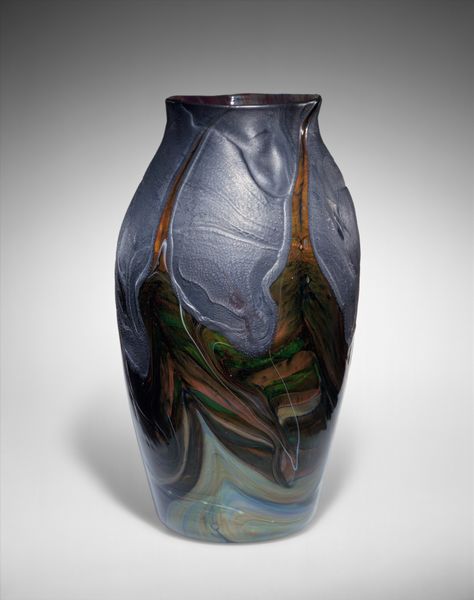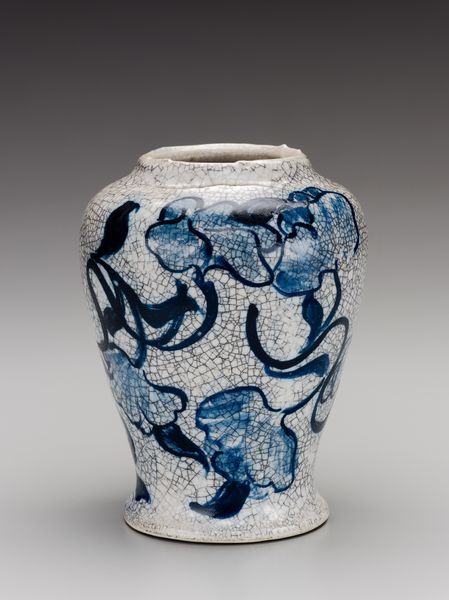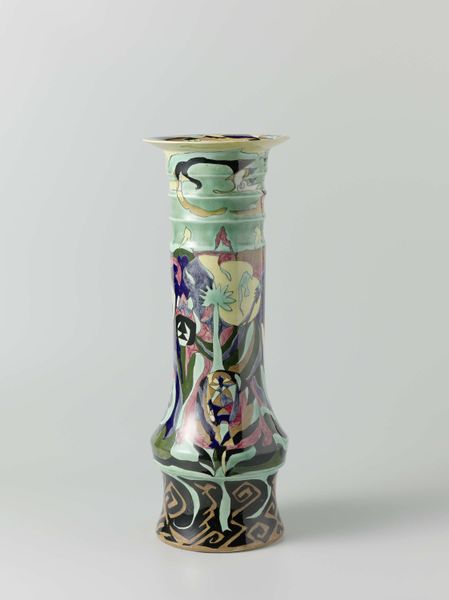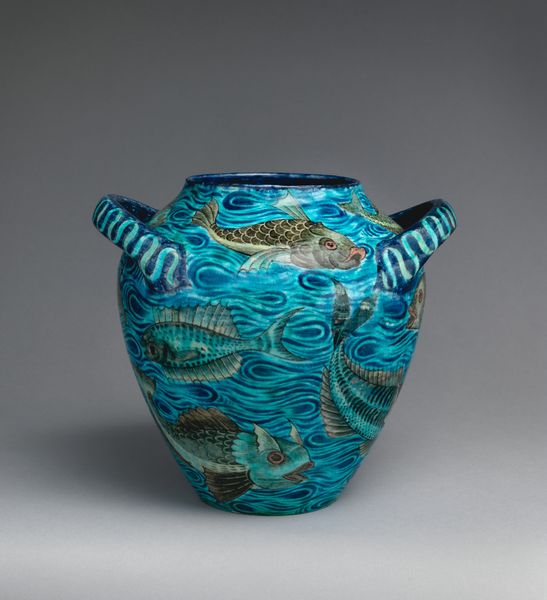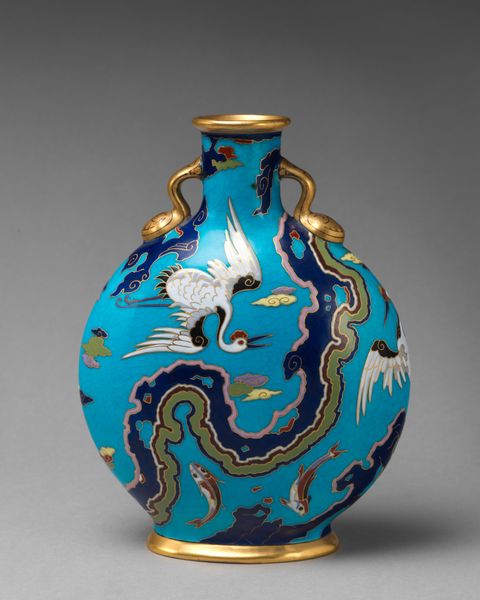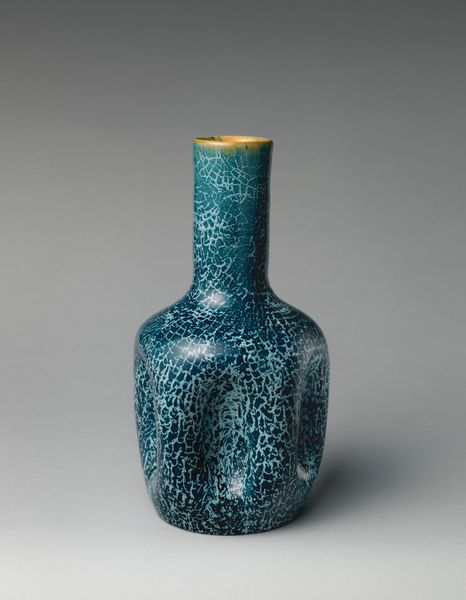
ceramic, sculpture
#
asian-art
#
ceramic
#
sculpture
#
decorative-art
Dimensions: Overall (confirmed): 19 1/16 × 13 3/4 × 10 in. (48.4 × 34.9 × 25.4 cm)
Copyright: Public Domain
Curator: I am struck by how substantial and still this vase feels. The plum color gives it a solemn feel, while the stylized blue decoration suggests life and movement. Editor: Let’s take a closer look. This is a ceramic vase created sometime between 1885 and 1895 by Joseph-Théodore Deck. Curator: Deck's integration of Asian motifs with a French sensibility speaks volumes about the cultural exchange that defined the period. The vase seems to be in conversation with Japanese art and design. It probably reflected Europe's fascination with Japanese design after the opening of trade routes with Japan in the late 19th century, doesn't it? Editor: I absolutely agree. The color scheme is quite intriguing. The plum is regal and reserved, contrasting sharply with the turquoise fruit and leafy motifs which evoke renewal. Fruit and leaves, particularly when arranged asymmetrically like this, are symbols of health and longevity. Curator: Do you notice how the handles themselves take the shape of the fruit and leafy sprigs that drip down the side of the vase? It has a 3-D effect. The symbols almost melt and move down its facade. Editor: Very much so! And the Chinese character is prominently positioned near the top— Curator: Likely symbolizing long life, given its association with similar motifs around it. The positioning elevates this vase from simple decoration to a ritual object, or something that is used to bestow a blessing upon the home in which it stands. Editor: Interesting that you mentioned its status, it’s a fine line, though, isn't it? With objects such as this vase, designed for display and use in elite domestic settings. It illustrates how objects function in social performances of taste and erudition. Curator: True. And a great example of how an object can be beautiful and functional. What do you make of it as a cultural memory object? Editor: Well, it certainly exemplifies a continuity of artistic values, showing how artists continue to draw upon earlier traditions to express new ideas. I'm struck by the fusion of cultural elements—both Asian symbolism and European artistic conventions. Curator: Indeed, looking at its historical and artistic elements brings us to see beyond it.
Comments
No comments
Be the first to comment and join the conversation on the ultimate creative platform.
